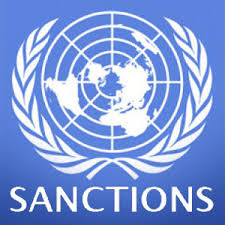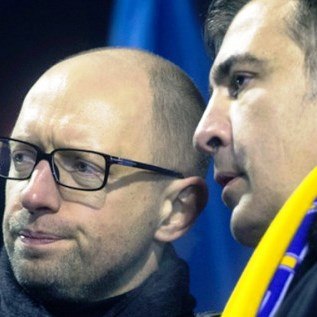(PONARS Eurasia Policy Memo) Economic problems associated with Russia’s stagnating economy, sanctions, and ruble devaluation have been accumulating. The growing indebtedness of regional budgets is one indicator that Russia’s economic wellbeing has been fading. Many regional governments have already raised utility prices and initiated spending cuts, slashing education, healthcare, and transportation budgets. Public reaction so far has been muted in a domestic environment characterized by public displays of patriotism and the rhetoric of national consolidation. Yet the sustainability of this apparent stability in the face of a deepening economic crisis is questionable. Regional governments are carefully monitoring the public mood and appear to be getting ready for potential public protests.
Warning Signs
The beginning of 2015 signaled trouble in Russia’s regions. The year began with the canceling of commuter trains (elektrichki) connecting regional capitals to surrounding areas, wreaking havoc in cities like Kursk, Bryansk, Smolensk, Kaluga, Oryol, Tver, and Tula. Inhabitants rely on these trains to get to work, go to hospitals and shops, and visit relatives. The cancellations were reversed after a sharp rebuke from President Vladimir Putin, but not before the incident became an important symbol of the looming financial problems many regions face. While Putin has been promoting the message “the worst is over” and “we’ve hit bottom,” economic problems have been growing, particularly in the regions.
According to Russia’s Ministry of Finance, by July 2015, overall regional indebtedness was about $36 billion. Only three federal subjects lack any debt: Sakhalin, the Nenetskii autonomous district, and the city of Sevastopol (in recently annexed Crimea). The largest regional debtholders (in nominal terms) are usually the stronger regions, such as Krasnodar, Tatarstan, and the Moscow region, which respectively owe 135 billion rubles, 105 billion, and 103 billion. The bigger worry is the growing number of regions with debt levels higher than the size of their budgets. These regions include Chukotka, with a debt level at 125 percent of its budget, as well as Mordovia, Smolensk, and Kostroma. In Karelia, Udmurtia, Belgorod, Vologda, and a few other regions, the debt is between 80-96 percent. Seventy-five regions ended 2014 with budget deficits, a distinct foretaste of Russia’s regional financial imbalances.
Admittedly, these financial problems are not entirely new. Russian regions are not fiscally autonomous and their own tax base is quite limited. Since the Kremlin-driven fiscal centralization of the early 2000s, many regions have had to rely on federal transfers to balance their budgets and, in some cases, maintain federally-mandated levels of social services. Regional fiscal health has, however, deteriorated quite rapidly in the last few years. Russian regional experts (such as Natalia Zubarevich) have noted that these latest regional debts originate from financing social commitments made by the Russian government, specifically May 2012 government decrees that increased the salaries of public servants. To compound their problems, regional governments often resort to borrowing funds in order to meet their obligations, frequently on a short-term basis from commercial banks. The proportion of commercial debt, which is far more expensive to finance than debt incurred from federal loans, has therefore increased, leading some regions to spend 4-6 percent of their budget just to service their debt.
On top of this, Russia’s economic slowdown means that regional revenues are stagnating. Corporate profit and personal income taxes make up about 70 percent of regional revenues, but both sources have diminished as investment, industrial production, and pay levels have decreased (real wages are expected to drop by around 10 percent in 2015). Furthermore, the amount of federal transfers has decreased, especially when compared to the peak flow in 2009, affecting another major income source regions have normally relied upon during the 2000s. A 10 percent budget sequester in 2015 affected, among other things, the amount of intergovernmental transfers planned for the year. The Far East developmental program has lost about half its funding, as did the program for developing the Kaliningrad region, which was cut by over a quarter. In short, regional governments have been operating in recent years under conditions of falling revenues and relatively stable expenditure levels, a situation that necessitates an active federal intervention to balance regional finances.
Regional Defaults or Soft-Budget Constraints Back Again?
Throughout the 2000s, growing oil and gas windfalls promoted regional competition over the redistribution of federal resources. Regional governments relied on organizing expensive mega-projects—international sport events, historical celebrations, or important government meetings involving foreign officials—to lobby for federal grants and subsidies. As energy prices went down and the financial situation in Russia shifted, regional governments have had to change their strategy from expansion to survival, or, in cases where many had already committed to specific events, rely on government and commercial loans to support projects. The increased social spending in the beginning of Putin’s third term added to the regional financial burden; it took place at a time when the federal center was starting to reduce its financial support, and the economy was starting to go down the path of stagnation.
The logical outcome in such circumstances is that highly indebted regions will eventually be unable to repay their loans on time and will thus need federal intervention. Novgorod was the first (and, so far, only) region to experience a technical default in February 2015, when it could not meet its payment obligations to VTB Bank. Several other regions could not meet their payments and were narrowly spared by loan extensions at below market rates.
Most analysts agree that regional defaults will be avoided because the Kremlin will bail out regions in critical situations. Such soft regional budget constraints are problematic, however. Growing obligations and shrinking revenues do not bode well for either the regions or the center, especially considering some regions continue to overspend and borrow (sometimes extensively), leading to unsustainable financial policies and an undermining of Russia’s macroeconomic stability. Even if the federal government takes “disciplinary” measures, such as seriously encouraging regional governments to balance their budgets and cut spending, regions know that they will be bailed out by the center in the end.
Economic and Social Ramifications
Many regional governments have initiated spending cuts. As experts note, the first programs to be affected are usually those in support of the economy and infrastructure (such as road construction and maintenance). But this initial stage has passed and regional governments have moved on to reduce social services (schools, hospitals, and public employment). In the healthcare sphere, 472 medical institutions across Russia are planned for “optimization” in 2015, which means hospitals and clinics will be reorganized, some closed entirely, a number of personnel will be cut, and some doctors and nurses will have to assume additional duties. These changes usually relate to smaller public hospitals and ambulatory services in villages, but even Moscow is now affected. This so-called optimization process of medical institutions in the capital city has involved the liquidation of many hospitals and is still ongoing, causing doctors and nurses to organize street protests, such as one held in late November. Education and communal services are two other spheres where the government is cutting spending.
Meanwhile, bills for utility services rose again in July 2015, on average by 10 percent. Even before these price hikes, the accumulated debt on utilities has risen to over 1 trillion rubles (about $20 billion) nationally. People are delaying payments. Residential and commercial non-payments for gas reached 220 billion rubles in 2014 and appear to have increased in 2015.
Spending cuts that took place in 2015 are expected to continue. The Ministry of Finance has called for the re-launching of “optimization” efforts in education, culture, and the public sector. Some regional governments have started cutting social benefits. A federal law adopted in March cancelled inflation adjustments for salaries and social payments. Some regional governments are further extending these measures and introducing more careful checks on eligibility for special social payments. For 2016, inflation adjustments on pensions have been limited to 4 percent and applied only to non-working pensioners.
The Public (Non)-Reaction
In May 2015, the Levada Center polled the public about their perceptions of priority directions for public spending in Russia. The poll revealed that a third of the population were not aware of spending cuts on healthcare. At the same time, 73 percent made clear their preference for free medical services, and 60 percent disagreed with re-directing part of government spending from healthcare toward alternative goals, such as developing Crimea, the Far East, or nuclear research. In short, public reaction or, more properly, non-reaction to government spending cuts in healthcare, social services, and benefits is shaped, on the one hand, by a lack of information and, on the other hand, a clear prioritization of foreign policy issues in public perceptions.
Experts of the Levada Center argue that debates over foreign policy in Russia have mostly displaced concerns with domestic issues. July 2015 polls on the most memorable events in 2015 cite developments in eastern Ukraine and Western sanctions. The cause of such an “outwardly-oriented” public mood rests to some extent on the Kremlin’s agenda setting, skillfully accomplished by state-controlled television. There is, however, arguably a more complex set of drivers rooted in Soviet-style public passivity and a lack of faith in any potential for constructive change on a range of domestic issues, combined with a sense of grandeur and accomplishment derived from social mobilization around issues that do not relate to everyday life. The Russian public is prone to feeling their contribution to some larger goal—whether that is countering the United States, fascism, or “Gayropa.”
In short, geopolitical ambitions and their realization—both real and symbolic—are less costly (in terms of individual action), more satisfactory, and more unifying to the Russian public, while concerns with salaries, pensions, and healthcare are being pushed to the side, at least for now. People are likely privately concerned with economic issues, yet they understand the “poor fit” of such concerns with the larger domestic environment characterized by public displays of patriotism and rhetoric of national consolidation.
It is not evident how long such passivity will continue, as the situation of preference falsification can continue for awhile, especially in the presence of additional psychological reasons (i.e., perceived external threats) that push toward support for the present regime. Of course, the avalanche of economic problems cannot be sustained forever and growing poverty, inflation, and unemployment will eventually make people speak out. Any inconsiderate action of the government—such as suddenly canceling regional train services or instituting a new road tax—can potentially trigger massive reactions (as we see with recent truckers’ protests in Russia). It is not surprising that Putin reacted to the train incident with such intensity. It is also not surprising that local governments are preparing for all scenarios, carefully monitoring the public mood and keeping teams of rapid-reaction anti-riot police on standby.
Gulnaz Sharafutdinova is Senior Lecturer in the Russia Institute at King’s College London.
[PDF]










